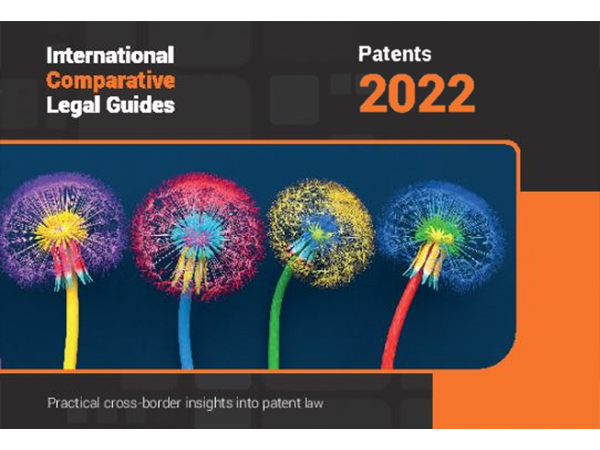
Intellectual Property
Viewpoints
Filter by:
First Amendment May Protect Use of Trademarks As Artistic Expression
May 27, 2020 | Blog | By Susan Neuberger Weller
In a recent decision from the Southern District of New York, Judge George B. Daniels held that the strong First Amendment interests in protecting free artistic expression warranted summary judgment that Activision Blizzard’s use of Humvee vehicle models in the blockbuster Call of Duty videogames was not a violation of the Lanham Act.
Read more
Federal Circuit Appeals Continue as Scheduled Without In-Person Arguments
May 19, 2020 | Blog | By Brad M Scheller, Jessica Perry
Yesterday the United States Court of Appeals for the Federal Circuit released modifications to court procedures, indicating that all in-person oral arguments are suspended until further notice.
Read more
Better Early Than Never: PTAB Confirms Willingness to Deny Institution In Light of Advanced State of Parallel Litigation
May 18, 2020 | Blog | By Michael Renaud, Daniel Weinger, Serge Subach
The Patent Trial and Appeal Board (“PTAB”) recently sent a warning to alleged infringers not to wait for the one year deadline to file IPR petitions, or risk discretionary denial. On May 13, 2020, the PTAB exercised its discretion to deny institution of an inter partes review (“IPR”) petition filed by Apple due to the advanced state of a parallel district court litigation in the Western District of Texas.
Read more
Federal Circuit Upholds Application of Dedication-Disclosure Doctrine at the Pleading Stage
May 15, 2020 | Blog | By Thomas Wintner, Adam Samansky, Nana Liu
On May 8, 2020, the Court of Appeals for the Federal Circuit affirmed the District of Delaware’s application of the disclosure-dedication doctrine in granting a motion for judgment on the pleadings in Eagle Pharmaceuticals Inc. v. Slayback Pharma LLC, No. 19-1924.
Read more
Defense in Trademark Action Not Precluded by Failure to Raise Same Defense in Earlier Action
May 15, 2020 | Blog | By Michael Graif, Meena Seralathan
The United States Supreme Court unanimously held this week that Lucky Brand was not precluded from mounting a new defense in its litigation with Marcel Fashions Group — despite having chosen not to bring up the same defense in a prior litigation. This ruling clarifies the circumstances under which a defense can be precluded from a lawsuit.
Read more
COVID-19: Prioritized Patent Application Examination and Patents 4 Partnerships
May 15, 2020 | Blog | By Peter Corless
The United States Patent and Trademark Office (USPTO) has recently launched two new initiatives to support COVID-19 innovations: 1) a COVID-19 Prioritized Examination Pilot Program, and 2) Patents 4 Partnerships that provides a searchable forum to list COVID-19 related published applications and patents available for licensing.
Read more
Federal Circuit Narrows Availability for IPR Appeals Under Arthrex
May 14, 2020 | Blog | By Marc Morley
By recognizing a constitutional deficiency in the appointment of Patent Trial and Appeal Board (“PTAB”) judges, the Federal Circuit in Arthrex, Inc. v. Smith & Nephew, Inc., 941 F.3d 1320 (Fed. Cir. 2019) set the stage for numerous appeals by parties unhappy with a PTAB decision and seeking a do-over with a new panel.
Read more
PTAB Presses Pause On All Arthrex Remands
May 12, 2020 | Blog | By William Meunier, Daniel Weinger, Matthew Galica
On Friday, May 1, 2020, Chief Administrative Patent Judge Scott R. Boalick of the Patent Trial and Appeal Board (“PTAB”) paused all activity in the significant number of PTAB cases remanded to it from the Federal Circuit under Arthrex (discussed here).
Read more
Actions Speak Louder Than Words: Germany’s Highest Court tells SEP implementers that simply saying that you are willing to license is not enough, and hold-out will not be tolerated
May 12, 2020 | Blog | By Michael Renaud, James Wodarski, Matthew Galica
After its recent ruling in Sisvel’s favor, Germany’s highest court on patent matters is expected to issue a highly favorable and detailed decision for standard-essential patent (SEP) owners seeking to prevent patent “hold-out” by unwilling licensees.
Read more
PTAB’s Decision Providing Factors for Denying Institution Based on Close Trial Date is Precedential; PTAB De-Designates One-Year Time Bar Decision
May 7, 2020 | Blog | By Daniel Weinger, Serge Subach
On May 5, 2020, the Patent Trial and Appeal Board (“PTAB”) designated one decision as precedential and removed the precedential designation on another. The newly-designated precedential opinion lays out factors that the PTAB considers when asked to exercise its discretion to deny institution in light of an imminent trial.
Read more
Supreme Court Holds that States Cannot Copyright Annotated Versions of Their Statutes
April 29, 2020 | Blog | By Michael Graif, Meena Seralathan
On April 27, 2020, the Supreme Court held that annotations to legislative text, even if created by a private contracted party, are not copyrightable materials under 17 U.S.C. §101. Invoking the government edicts doctrine, the Court made explicit the notion that all members of government involved in lawmaking, including state legislators, are barred from being “authors” for purposes of copyright protection.
Read more
Recent USPTO Report Suggests Greater Consistency and Predictability in Patent-Ineligible Subject Matter Rejections
April 28, 2020 | Blog | By Brad M Scheller, Meena Seralathan
Last week, the US Patent and Trademark Office (“USPTO”) released a report detailing its findings on how the U.S. Supreme Court decision in Alice Corp. v. CLS Bank International, as well as subsequent USPTO guidance on 35 U.S.C. § 101 rejections, has affected rates of, and variability between, office action rejections.
Read more
Federal Circuit Holds that Accused Infringers that Invalidate Asserted Patents at the PTAB Can Be a Prevailing Party Under Section 285
April 28, 2020 | Blog | By Daniel Weinger, Meena Seralathan
Last week, the Federal Circuit, in a precedential decision, reinforced that an accused infringer can be a “prevailing party” for the purposes of seeking attorneys’ fees under 35 U.S.C. § 285 when it successfully invalidates the asserted patent at the Patent Trial and Appeal Board (“PTAB”).
Read more
How the CARES Act Affects Patent Related Deadlines
April 27, 2020 | Blog | By Lisa Adams, Nicholas Eadie
In accordance with the CARES (Coronavirus Aid, Relief, and Economic Security) Act, the USPTO has extended some patent-related deadlines.
Read more
Strategic Considerations for Obtaining a Foreign Filing License in China
April 27, 2020 | Blog | By Christina Sperry, Mark Hammond
As more U.S. businesses employ inventors abroad, the need for foreign filing licenses increases, especially if patent rights are first sought domestically. Obtaining foreign filing licenses may present financial and linguistic obstacles, potentially jeopardizing the priority date of your application or patent rights within the foreign country.
Read more
Federal Circuit Finds IPRs Can Circumvent Assignor Estoppel
April 27, 2020 | Blog | By Daniel Weinger
On Wednesday, the Federal Circuit held that while assignor estoppel is applicable in district court proceedings, petitions for inter partes review continue to not be subject to the equitable remedy. Assignor estoppel is an equitable doctrine based on the principle of fair dealing that prevents a party who divests a patent from later challenging the validity of that patent.
Read more
SCOTUS holds that PTAB Time-Bar Determinations are Not Reviewable on Appeal
April 22, 2020 | Blog | By Michael Newman, Serge Subach
On Monday, in Thryv, Inc. v. Click-to-Cal Technologies, the Supreme Court held that § 315(b) time-bar determinations are not subject to judicial review. In this 7-2 decision penned by Justice Ginsburg, with Justices Gorsuch and Sotomayor dissenting, the Court determined that time-bar determinations are unreviewable because they are “closely tied” to the Director’s decision to institute an inter partes review (IPR).
Read more
Informative Whirlpool Decision Reaffirms Importance of Secondary Considerations
April 21, 2020 | Blog | By Brad M Scheller, Courtney Herndon
Recently on April 14, 2020, the Patent Trial and Appeal Board (“Board”) designated Ex parte Whirlpool Corp., Appeal 2013-008232 (Oct. 30, 2013) “Informative”. In Whirlpool, the Board reversed the Examiner’s obviousness rejection of claims 1, 4, 6, and 8 of U.S. Patent No. 6,082,130 (“the ’130 patent”), finding that the Patent Owner, Whirlpool Corporation, established a nexus between its objective evidence of non-obviousness and the claimed invention.
Read more
Recently Designated Precedential PTAB Decision Confirms Objective Indicia of Nonobviousness Can Rescue Patents from Invalidation at the PTAB
April 21, 2020 | Blog | By Brad M Scheller, Meena Seralathan
Last week, the Patent Trial and Appeal Board (“PTAB”) designated a January 24, 2020 decision, finding objective indicia of nonobviousness, such as evidence of long-felt need and industry praise, saved a patent owner’s amended claims from invalidation, as precedential.
Read more
Steps Your Company Should Consider Now to Protect Value with a Wave of Trade Secret Litigation on the Horizon Due to COVID-19 Pandemic, Economic Downturn, and Jobless Claims
April 17, 2020 | Blog | By Michael Renaud, Nicholas Armington
The coronavirus pandemic has created profound changes to how many Americans do their work, with an outsized number now working from home. This arrangement, while necessary given social distancing requirements and the stay-at-home advisories in many states, has created a marked increase to the threat of trade secret misappropriation.
Read more
Explore Other Viewpoints:
- Data Centers & Digital Infrastructure
- AI: The Washington Report
- Antitrust
- Appellate
- Arbitration, Mediation & Alternate Dispute Resolution
- Artificial Intelligence
- Awards
- Bankruptcy & Restructuring
- California Land Use
- Cannabis
- Class Action
- Complex Commercial Litigation
- Construction
- Consumer Product Safety
- Corporate Governance (ESG)
- Cross-Border Asset Recovery
- DEI Legal Developments
- Debt Financing
- Direct Investing (M&A)
- Diversity
- EB-5 Financing
- Education & Nonprofits
- Employment
- EnforceMintz
- Environmental (ESG)
- Environmental Enforcement Defense
- Environmental Law
- Environmental, Social, and Corporate Governance (ESG)
- FDA Regulatory
- False Claims Act
- Federal Circuit Appeals
- Financial Institution Litigation
- Government Law
- Growth Equity
- Health Care
- Health Care Compliance, Fraud and Abuse, & Regulatory Counseling
- Health Care Enforcement & Investigations
- Health Care Transactions
- Health Information Privacy & Security
- IP Due Diligence
- IPRs & Other Post Grant Proceedings
- Immigration
- Impacts of a New US Administration
- Insolvency & Creditor Rights Litigation
- Institutional Investor Class Action Recovery
- Insurance & Financial Services
- Insurance Consulting & Risk Management
- Insurance and Reinsurance Problem-Solving & Dispute Resolution
- Intellectual Property
- Investment Funds
- Israel
- Licensing & Technology Transactions
- Life Sciences
- Litigation & Investigations
- M&A Litigation
- ML Strategies
- Medicare, Medicaid and Commercial Coverage & Reimbursement
- Mergers & Acquisitions
- Patent Litigation
- Patent Prosecution & Strategic Counseling
- Pharmacy Benefits and PBM Contracting
- Portfolio Companies
- Privacy & Cybersecurity
- Private Client
- Private Equity
- Pro Bono
- Probate & Fiduciary Litigation
- Products Liability & Complex Tort
- Projects & Infrastructure
- Public Finance
- Real Estate Litigation
- Real Estate Transactions
- Real Estate, Construction & Infrastructure
- Retail & Consumer Products
- Securities & Capital Markets
- Securities Litigation
- Social (ESG)
- Special Purpose Acquisition Company (SPACs)
- Sports & Entertainment
- State Attorneys General
- Strategic IP Monetization & Licensing
- Sustainable Energy & Infrastructure
- Tax
- Technology
- Technology, Communications & Media
- Technology, Communications & Media Litigation
- Trade Secrets
- Trademark & Copyright
- Trademark Litigation
- Unified Patent Court (UPC)
- Value-Based Care
- Venture Capital & Emerging Companies
- White Collar Defense & Government Investigations
- Women's Health and Technology






